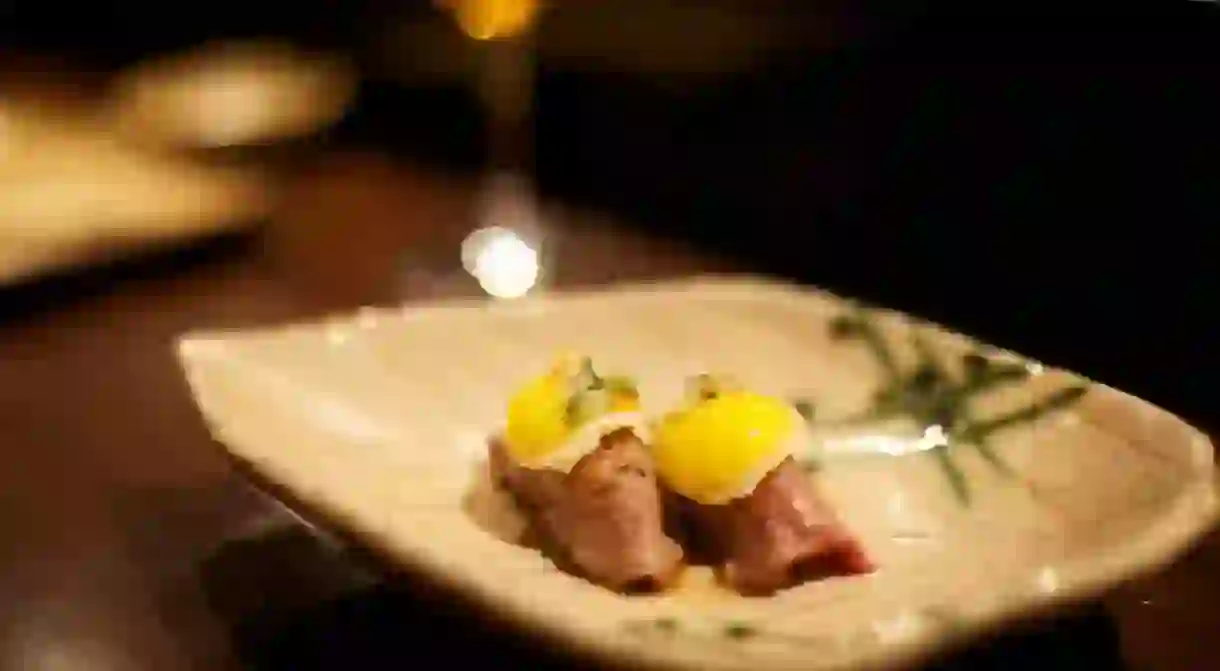Is Peru Home to the Best Fusion Food?

Peru is without a doubt a world leader in fusion food, mixing traditional Peruvian styles with the culinary styles and traditions of the immigrants who have found themselves on Peru’s shores. The country has been named the world’s leading culinary destination by the World of Travel Awards, and has little hidden gems all of the country, especially in Lima, which has become Peru’s capital for everything culinary. Most dishes in Peru are a little bit of everything, making the flavors and dishes entirely unique. Here is our guide to what makes Peru the world’s best in fusion food.
Nikkei
Nikkei is a melding of Peruvian and Japanese ingredients and techniques that has become the new craze in Lima, with high-end Nikkei restaurants appearing all over the city. The most well known is Maido, ranked at number 8 in the world’s best 50 restaurants. Maido is a perfect example of what to expect at a Peruvian–Japanese fusion restaurant. The menu runs from exquisite Japanese sushi classics to original creations such as cau cau, a pre-Columbian potato stew given a modern twist with the addition of sea snails. You can find classic Japanese food paired alongside a traditional Peruvian dish such as tacu tacu, which is essentially just rice and beans that have been refried and served a day later. These restaurants do not come cheap, and are usually at the high end in terms of prices and overall dining experience.

Chifa
Chifa is one of Peru’s favorite types of food, and is typically eaten at big family gatherings. Chifa is a Peruvian–Chinese fusion, brought to Peru by the influx of East Asian immigrants in the late 19th and early 20th centuries. The style has been embraced with open arms and is traditionally eaten at restaurants on a Sunday – if you can get a table, that is. Families go to chifa restaurants dressed in their Sunday best and share the typically large, family-style plates that the cuisine is known for. It is all the Chinese classic dishes with Peruvian twists. When traveling in Peru, you won’t have trouble finding a chifa restaurant – they’re everywhere.

Criollo
When it comes to food, comida criollo is a fusion of ingredients, cooking techniques, and flavors from all over the world. It’s an eccentric overlapping of indigenous, African, and European cuisines that makes up Peru’s comfort food. The Chinese brought their woks to create the infamous lomo saltado stir-fry; the Spanish brought their love for creamy sauces, poured over Andean potatoes, thus inventing papa a la Huancaina; and Africans invented the savory tacu tacu, essentially rice and beans that’s been refried and is eaten a day later. Criollo cuisine is a bizarre and unique fusion of flavors that truly cannot be found anywhere else in the world. The best-known restaurant for criollo food is Barranco’s Isolina.
Isolina, Peru, Av San Martin 101, Lima 15063, Lima, Peru, +51 012475075
Ceviche
While Peru is most associated with this dish, which may make seem entirely Peruvian, it is actually a fusion from different areas within Peru, and the limes that are a key ingredient in ceviche, used to “cook” the fish, are actually from Spain. Upon closer examination, the classic ceviche that you see in Peru – with the aji amarillo pepper, and rocoto pepper, sweet potato and yuca – is from all over Peru. The fresh fish is all from the west of Peru, where the Pacific Ocean offers an abundance of fish varieties, and the sweet potatoes and yuca are from the Andes areas, mixing two entirely different ecospheres together. The lime is from Spain, and the technique of using raw fish may originate from Japan. It is said that the Moche people, who predated the Incas and lived near the ocean, were the first to invent the dish, maybe using something else to marinate and cook the fish, because the Spanish hadn’t arrived yet. Whatever the true answer may be, it’s certain that ceviche is a mixture of different ingredients and techniques brought together from across the globe.














